
The WAGR Dm class was a class of 4-6-4T tank locomotive operated by the Western Australian Government Railways (WAGR) between 1945 and 1971.
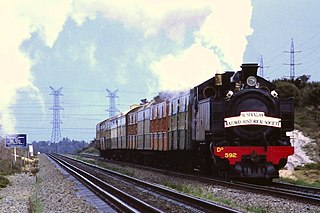
The WAGR Dd class was a class of 4-6-4T tank locomotive operated by the Western Australian Government Railways (WAGR) between 1946 and 1972.
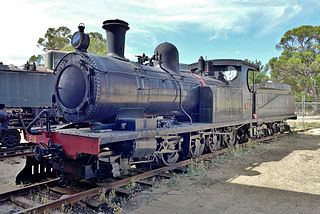
The Western Australian Government Railways (WAGR) O Class was a class consisting of fifty-six 2-8-0 steam locomotives which were introduced by the WAGR between 1896 and 1912. Despite them being tender locomotives, they also featured short boiler side tanks for additional water storage. A useful feature for the long distances required by operation on Western Australia's country lines.
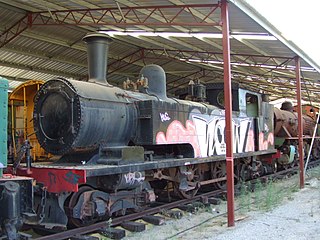
The WAGR N class was a class of steam locomotives operated by the Western Australian Government Railways (WAGR) from 1896 until 1960.
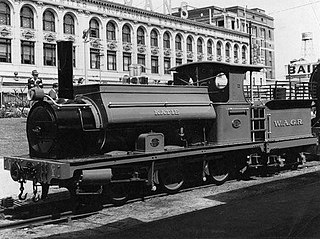
The WAGR C Class was a class of steam locomotives built by Robert Stephenson and Company for the Western Australian Government Railways in 1880 to the same design as the NZR F class.

The WAGR W class is a class of 4-8-2 steam locomotives operated by the Western Australian Government Railways (WAGR) between 1951 and 1972.

The WAGR S class was a class of 4-8-2 steam locomotives built by the Midland Railway Workshops between 1943 and 1947 and operated by the Western Australian Government Railways (WAGR).

The WAGR P and Pr classes were two classes of 4-6-2 steam locomotives designed for express passenger service on the Western Australian Government Railways mainline network. The initial designs were prepared by E.S. Race and together the two classes had a total build number of thirty-five locomotives, the P and Pr classes entering service in 1924 and 1938 respectively. Both classes were used on express passenger services, greatly improving the economy and speed of long-distance passenger travel in Western Australia, the results of which were most visible on the Western Australian stage of the Trans-Australian Railway and Westland Express.

The WAGR V class was the last class of steam locomotive to enter service with the Western Australian Government Railways (WAGR). The class was part of the post war regeneration plan for the WAGR, intended for the heavy coal traffic between the Collie coal fields and Perth.
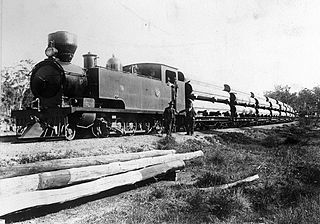
The K-class was a class of 2-8-4T steam locomotives of the Western Australian Government Railways

The H class was a class of two steam locomotives operated by the Western Australian Government Railways (WAGR) introduced in 1889.
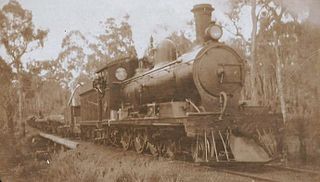
The WAGR J class was a three-member class of 4-6-0 steam locomotives operated by the Western Australian Government Railways (WAGR) between 1892 and 1924 before seeing further use with the State Saw Mills until the early 1930s.

The WAGR Q class was a six-member class of 4-6-2T tank engine steam locomotives operated by the Western Australian Government Railways (WAGR) between 1896 and 1925.

The WAGR Pm and Pmr classes were two classes of 4-6-2 tender engine steam locomotives operated by the Western Australian Government Railways (WAGR) between 1950 and the early 1970s.
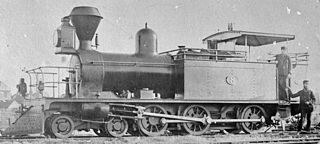
The WAGR B class was a class of 4-6-0T tank locomotives operated by the Western Australian Government Railways (WAGR) between 1884 and 1959.
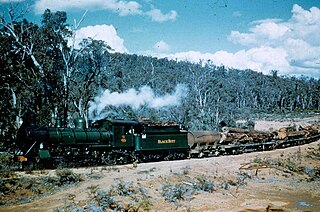
The WAGR C class was a class of light axle load steam locomotives operated by the Western Australian Government Railways (WAGR) between 1902 and 1961. A total of 22 were built in two batches.

The WAGR E class was a two-member class of 2-4-4-2T double-Fairlie locomotives operated by the Western Australian Government Railways (WAGR) between 1881 and 1892.

The WAGR A class was a class of 2-6-0 steam locomotives designed by Beyer, Peacock & Co and operated by the Western Australian Government Railways (WAGR) between 1881 and 1955.

The WAGR U class was a single member class of 0-6-0T tank locomotive operated by the Western Australian Government Railways (WAGR) from 1904 until 1940.
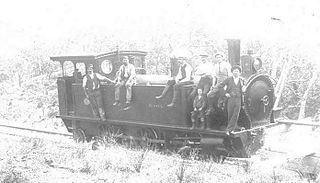
The WAGR K class was a single member class of 0-6-2T tank locomotive used intermittently by the Western Australian Government Railways (WAGR) between 1891 and 1926.
























